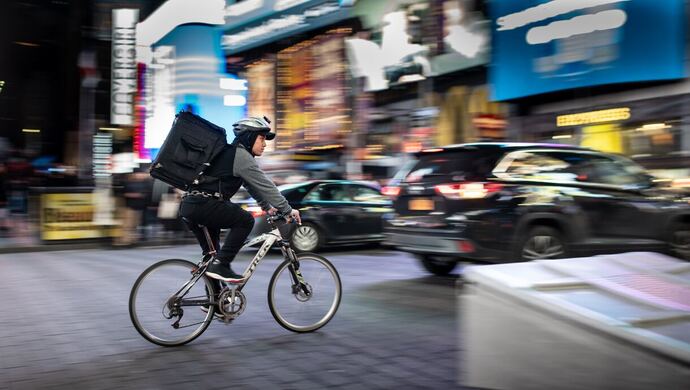
In Singapore where we are a nation of gift-givers, online shopping has become second nature due to increased convenience and affordability. We are also big on celebrations and gifting is at the heart of it all — anniversaries, house warming, birthday celebrations, weddings, you name it and we have it. In fact, e-commerce activity is booming in our nation with the likes of year-end sales and this Christmas season is no doubt the best time for online shopping.
As with shopping in brick-and-mortar stores where we get the pleasure of retail therapy once dopamine is released into our brains, we have digital dopamine that works the same for online shopping.
During a sale, as you have guessed it — we are all the more given a harder kick. Commonly called “shopper’s high”, this rush encourages exploration by rewarding us when we stumble upon something salutary. Moreover, the e-commerce market is gradually adapting to the concept of instant gratification as well, establishing the ultimate dream for consumers as they are able to get what they need with a simple tap on their screens, right from their comfort zone.
However, while shaping up ahead this Christmas, it is crucial to shed light on the underrated topic about the negative effects of rabid consumerism on the environment — caused by unwanted things, throwaway packaging and the overall destruction of natural resources.
Also Read: Here’s how global businesses could drive sustainable development
In fact, a study has revealed that Asia consumes 50 per cent of global plastic packaging, which could quadruple in the next three decades. Furthermore, with new consumption patterns, including the continent’s rising appetite for e-commerce and food delivery — up 84 per cent year-on-year — we are witnessing the increasing demands of plastic packaging.
Known to few, the higher the consumption rate, the more waste will be produced. While there is a growing desire among Singapore millennials to discriminate against consumerism and verify the sustainability credentials of products they purchase, there is still room for e-commerce players to be more eco-friendly in their day-to-day practices.
How can we leverage technology for good, while enabling customers to scout for good deals and enjoy a borderless e-commerce experience?
1. Sustainable shipping
Consumers prioritize the ability to receive their products quickly, and at a reasonable price when online shopping. In order to encourage consumers to choose a more environmentally-friendly shipping method, businesses can simply change the order of their suggested shipping method by putting the most sustainable option on top.
At the same time when doing so, companies can educate customers on the positive impact of their sustainable contribution, just by making small changes. Before, most customers would choose the fastest shipping, but after making that small change, businesses can expect to see more customers opting for the sustainable option. Sometimes, all it takes is a consumer education to raise awareness around the increasing need to be environmentally-friendly.
2. Smaller packages
Having big boxes for a small product, coupled with multiple layers of plastic and bubble wrap sure sound familiar for businesses and consumers alike. Shipping out oversized packages certainly comes with a negative impact on the environment as well.
Buyandship’s small contribution to this is by offering free consolidation of packages, which in turn reduces the use of plastic. This also allows users and businesses alike to satisfy their environmental responsibilities by reducing carbon footprint. Additionally, businesses are also able to fit more packages into the vehicle, thereby being able to increase the number of transportation vehicles moving out for deliveries and ship more effectively in a single trip — and going the extra ‘green’ mile.
3. Right delivery partner
Nothing is more important than choosing the right delivery partner when it comes to deliveries, as it forms part of the process which ensures that all products arrive safely in the hands of consumers. At the same time, this also means that our delivery partners are one of the largest contributing factors to the pollution caused by e-commerce. By choosing a partner that has green shipping alternatives such as owning a fleet of electric vehicles, for example, businesses can reduce their online stores’ greenhouse emissions.
Also Read: Want to succeed wildly? Adjust your attitude
If your delivery partner does not own an electric fleet, fret not! There are others ways which businesses can reduce the overall transportation frequency of products. Similar to the above best practices, by informing consumers that should they choose standard delivery (4 to 7 business days) upon the checkout process — as opposed to express (1 to 3 days) or same-day delivery — they will help the environment and save X per cent on emissions, thus reducing carbon footprint. By doing so, consumers may opt for standard delivery and deliveries will ultimately be optimized by engaging fewer suppliers to cover multiple needs, thereby reducing the number of shipments.
Whether it is about cost or environmental savings, sustainability is here to stay. It is crucial for businesses to satisfy its environmental responsibilities and optimize the overall customer experience through collaboration with partners in the ecosystem to develop sustainable practices that delight customers and eliminate waste, while at the same time maintaining quality products and services — by ensuring products arrive undamaged and intact.
–
Editor’s note: e27 publishes relevant guest contributions from the community. Share your honest opinions and expert knowledge by submitting your content here.
Join our e27 Telegram group here, or our e27 contributor Facebook page here.
Image Credit:
The post How to create a green ‘Clickmas’ with sustainable e-commerce operations appeared first on e27.